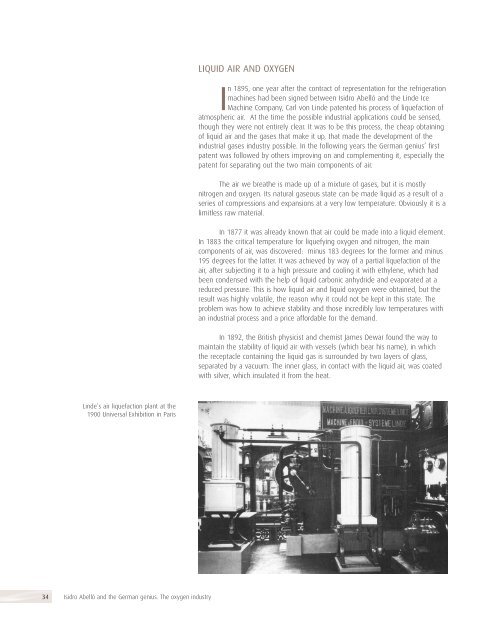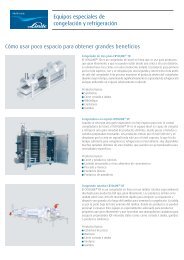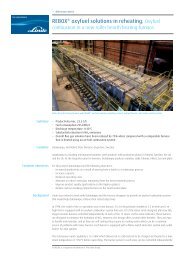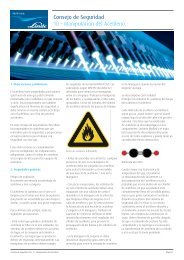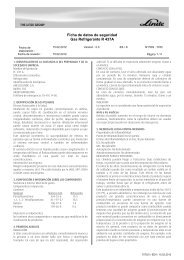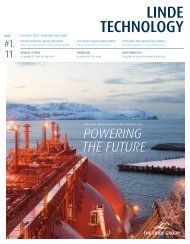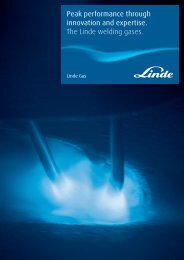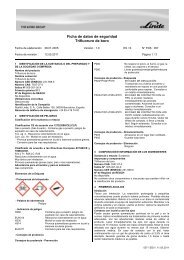Abelló Linde Centenary Book
Abelló Linde Centenary Book
Abelló Linde Centenary Book
You also want an ePaper? Increase the reach of your titles
YUMPU automatically turns print PDFs into web optimized ePapers that Google loves.
LIQUID AIR AND OXYGEN<br />
In 1895, one year after the contract of representation for the refrigeration<br />
machines had been signed between Isidro Abelló and the <strong>Linde</strong> Ice<br />
Machine Company, Carl von <strong>Linde</strong> patented his process of liquefaction of<br />
atmospheric air. At the time the possible industrial applications could be sensed,<br />
though they were not entirely clear. It was to be this process, the cheap obtaining<br />
of liquid air and the gases that make it up, that made the development of the<br />
industrial gases industry possible. In the following years the German genius’ first<br />
patent was followed by others improving on and complementing it, especially the<br />
patent for separating out the two main components of air.<br />
The air we breathe is made up of a mixture of gases, but it is mostly<br />
nitrogen and oxygen. Its natural gaseous state can be made liquid as a result of a<br />
series of compressions and expansions at a very low temperature. Obviously it is a<br />
limitless raw material.<br />
In 1877 it was already known that air could be made into a liquid element.<br />
In 1883 the critical temperature for liquefying oxygen and nitrogen, the main<br />
components of air, was discovered: minus 183 degrees for the former and minus<br />
195 degrees for the latter. It was achieved by way of a partial liquefaction of the<br />
air, after subjecting it to a high pressure and cooling it with ethylene, which had<br />
been condensed with the help of liquid carbonic anhydride and evaporated at a<br />
reduced pressure. This is how liquid air and liquid oxygen were obtained, but the<br />
result was highly volatile, the reason why it could not be kept in this state. The<br />
problem was how to achieve stability and those incredibly low temperatures with<br />
an industrial process and a price affordable for the demand.<br />
In 1892, the British physicist and chemist James Dewar found the way to<br />
maintain the stability of liquid air with vessels (which bear his name), in which<br />
the receptacle containing the liquid gas is surrounded by two layers of glass,<br />
separated by a vacuum. The inner glass, in contact with the liquid air, was coated<br />
with silver, which insulated it from the heat.<br />
<strong>Linde</strong>’s air liquefaction plant at the<br />
1900 Universal Exhibition in Paris<br />
34 Isidro Abelló and the German genius. The oxygen industry


